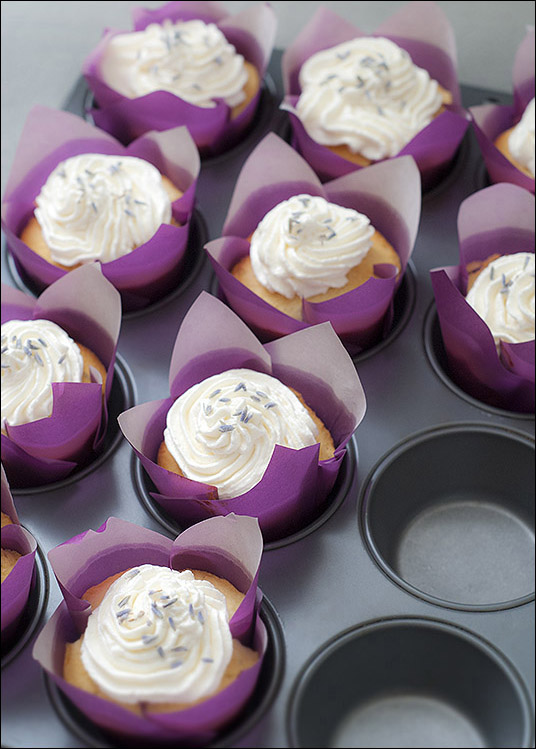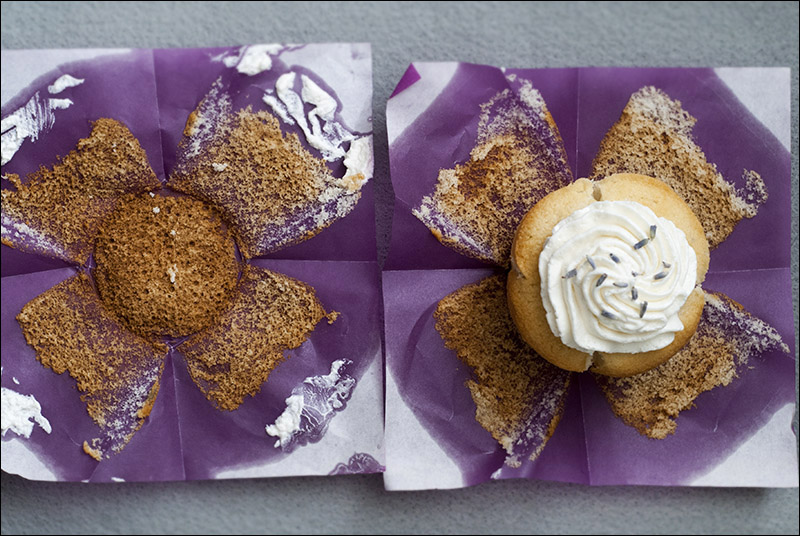 |
| Lavender cupcakes. © Ryan Schierling |
The Italian Meringue Buttercream recipe/technique seems to be the gold standard per the interwebs, but actually doing it was a bit intimidating at first. It took actually watching the video podcast by Warren Brown of Cakelove to really demystify the process for me. The very idea of pouring boiling hot sugar directly into egg whites whipping around in the KitchenAid mixer would have been considerably more frightening had I not seen it done half a dozen times online. But, this recipe is solid, no fuss, quick and very dependable when you have your ingredients in place and follow the directions precisely. It also produces a beautiful airy icing that is rich, sweet (but not cloyingly so), and will not only maintain its shape once set, but hold up admirably in warmer weather conditions.
 |
| Cake with Italian Meringue Buttercream and lavender. © Ryan Schierling |
Sift before measuring:
3 cups (or 11 ounces*) bleached all-purpose flourResift together with:
1/2 cup (or 3 ounces*) potato starch
4 teaspoons double-acting baking powder
Add to dry ingredients:
1 teaspoon kosher salt
1 cup (8 ounces) unsalted butter (65-70 degrees is optimal)
Add gradually and continue to cream at low speed until very light and coating the side of the bowl:
1-3/4 cups extra-fine sugar with lavender essence (prepare as described above)
1 cup, plus 1 tablespoon, whole milk (65-70 degrees is optimal)
Stir the batter until smooth after each addition.
Beat in:
1 teaspoon vanilla extract
3 teaspoons of the lavender flowers which were used to make the sugar. Be sure to remove any leaves or stems.
Continue mixing at medium speed for 2 minutes.
7 egg whites (from large eggs)
Turn mixing speed up to high, continue to whip until just past soft peaks and gradually add:
1/4 cup extra fine sugar (or remaining lavender sugar)
Continue whipping only until stiff peaks, not dry.

J- these are GORGEOUS!
ReplyDeleteThanks! I think this lighter version of the buttercream is my new favorite. Pipes nicely, too.
Delete